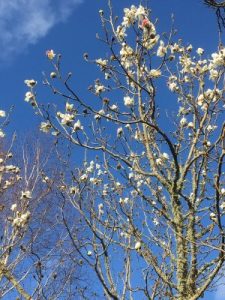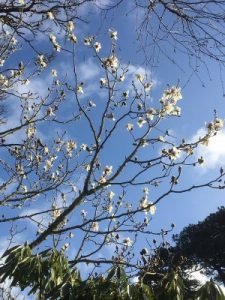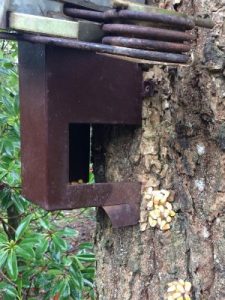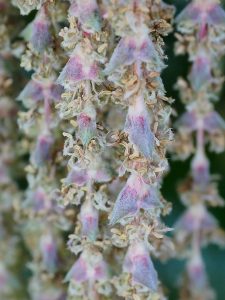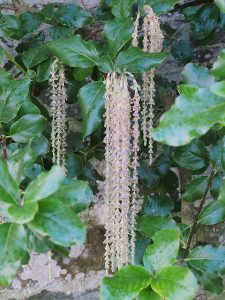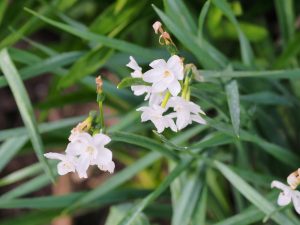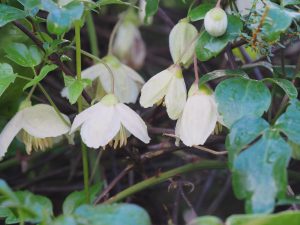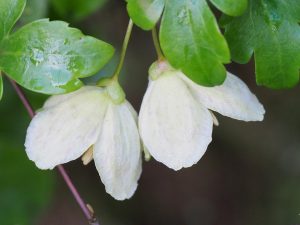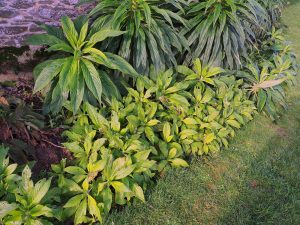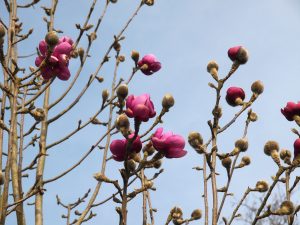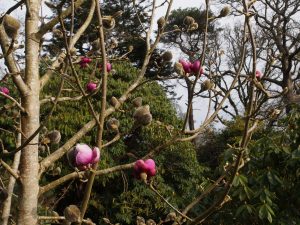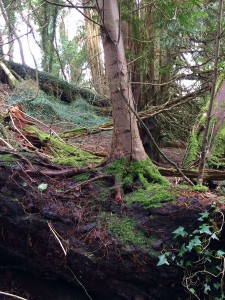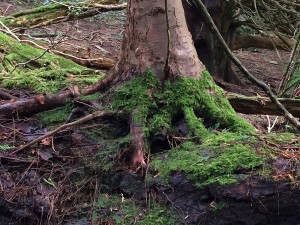The rather insipid coloured Magnolia campbellii up by Tin Garden is now more or less full out.
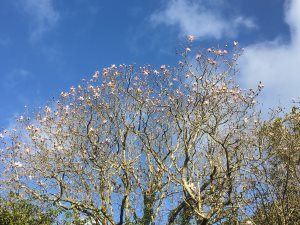
The squirrels caught in the garden in 2018 totalled 115 using these Kania 2000 traps. In the last month, and using the newly legal automated New Zealand traps, we have managed another 15 as conditions have got colder and the availability of natural seeds and berries has declined. Of these nearly every one has been female. Despite the cull there has still been some serious squirrel damage to immature trees in the garden as we have seen in the past few months. It is clear that squirrels migrate from hedgerows around corn and maize fields after harvest and recolonise woodland areas with over mature trees (ie holes) and existing dreys. On sunny days when going around the garden you can still frequently see squirrels foraging far and wide exploring new territories and resettling in them. This is an ongoing battle which we are unlikely ever to win completely. Up to six years ago poison hoppers did a far better and more effective job of squirrel control before supplies ran out and the Swedish company which had the European patent declined to renew it on the grounds of cost. It is generally believed that the poison was made illegal but this is something of a fallacy as it can still be used to control squirrels in grain barns or attics or so I believe.
Plenty of early new growth on Fuchsia gracilis confirming a frost free winter.
Another magnolia is just coming out – Magnolia sprengeri ‘Copeland Court’. It is a bit battered and blown open early but the colour is good even if the flowers are small. Colour varies. Those blown open early are too pale but some are a good dark colour as they should be.
2016 – CHW
Here is something peculiar! A well established self sown Thuja plicata growing happily on the fallen trunk of one of its parents in Brownberry Wood. Actually Jaimie Parsons took this picture while beating last week so I can claim no credit for unearthing this horticultural curiosity for you. The trunk of the parent is still alive so the sapling may or may not triumph eventually.
2005 – FJW
Magnolia flower can be seen from the front door.1992 – FJW
A little rain fell.1990 – FJW
A fresh flower on original Mag sprengeri diva (Michael Lear saw it yesterday) – Bishop Peter shows colour.1969 – FJW
Trewidden Grande very good.1962 – FJW
St Ewe hedge very good. Too mild – cut back by Lord Headford and Plagianthus. 2 nice flowers of early Sutch. Arb. hybrid.
1929 – JCW
Much as in 1918 but no big coloured Rhodo’s show flower, a late season.
1926 – JCW
No daffs in the Tin Garden, Irroratum, Moupinense, blood red Arboreum and blood red [?] show flower, Barbatum open and Scabrifolium is very good, also several Primroses are open and E. hybrida is very good.
1922 – JCW
Nearly 20 species of Rhodo are open a bit, perhaps Irroratum and Scabrifolium are the best. Erica darlyense is very fine this year.
1920 – JCW
There are 21 species of Rhodo showing some flower Lutescens – Scabrifolium and Sutchunense are good, Praecox is the best thing open.
1916 – JCW
Rhodo’ species in flower Lutescens, Sutchuenense, Flavidum, Intricatum, Oleifolium, Barbatum, Arboreum (pink), Longistylum, Moupinense, Ciliatum and Argenteum.
1904 – JCW
Picked five seedling trumpets half open, one of them a Cyc X.




